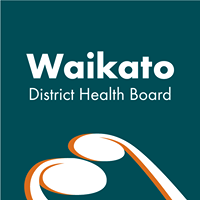Date: 21 November 2012
Uncomplicated Births the Norm for Waikato Mothers
Recently-released national maternity indicators show that
nearly 80 per cent of women between the ages of 20 and 34
have a normal and uncomplicated birth in the Waikato
District Health Board area.
The report compares district health boards across the country by analysing the birth outcomes of first time mothers and enables each of the 20 DHBs to compare the data on a group of women for whom similar birth outcomes and interventions are expected.
When comparing Waikato DHB’s results with national numbers, the DHB is doing better than the national average of 70 per cent and continues to be in the top five performing DHBs.
Chief operating officer Jan Adams said the maternity indicators data gives Waikato DHB an indication of how well it is doing nationally with a comparable group of women.
“We are pleased to see that Waikato DHB is providing good services when comparing us to other DHBs.”
Waikato DHB’s rate of instrumental vaginal births is lower than the national average and the caesarean section rate is the lowest in the country.
Obstetrics clinical director Penelope Makepeace said the indicators, now into their second year, gives her department the opportunity to look at both local and national trends.
“As a department we are delighted with our DHB vaginal delivery rate and low instrumental and caesarean section rate.”
Other indicators outline that:
• The
DHB has a higher than the national average rate for
premature births which is an area for further investigation.
There is a correlation between smoking during pregnancy and
premature birth and unfortunately smoking rates are high in
some parts of the Waikato. This however will not account for
all occurrences of premature births.
•
• Induction of labour is slightly higher than
the average and is an area Waikato DHB will further
investigate.
•
• Encouragingly out of all DHBs
Waikato has the lowest rate of women affected by perineal
trauma. The DHB will look at how it can continue to improve
rates of intact perineum. However when you look at the data
on the small number of women who have had perineal trauma
the DHB has a higher rate than the national average for
third or fourth degree tears.
•
• In terms of
blood transfusion during birth by caesarean section it is
satisfactory to see that the DHB has a lower rate than the
national average and a lower rate for blood transfusion for
vaginal births.
•
“Waikato DHB covers a sizeable
geographical area and we are fortunate to have a wide range
of primary birthing facilities where a large number of our
normal uncomplicated births occur enabling healthy women to
birth nearer their home,” said Mrs Adams.
“As a DHB our overall rates for most of the indicators are very good. When you compare the hospital facility only data, Waikato Hospital rates in some cases show higher rates of intervention than some of the other secondary care hospitals.”
Director of nursing and midwifery Sue Hayward said this indicates that the women who require intervention are in the right place for care.
“Either because they started their birth journey in Waikato Hospital or have been transferred in from one of our birthing facilities when they have needed intervention, and those who have a normal birth in a primary birthing facility are in the right place to receive the right level of care they require,” she said.
The data is a snap shot of births focusing on 845 births in Waikato and comparing the outcomes of 16 per cent of all births across the country.
“For this group of births it tells us that outcomes on
average are better in Waikato than some of our peer DHBs on
a number of the indicators measured.
ends



 University of Auckland: Tributes Flow For Much Loved Pacific Leader Melegalenu’u Ah Sam
University of Auckland: Tributes Flow For Much Loved Pacific Leader Melegalenu’u Ah Sam NZEI: Ministry Of Education Cuts Will Disproportionately Affect Pasifika
NZEI: Ministry Of Education Cuts Will Disproportionately Affect Pasifika Day One Hapai te Haeata: Call To Action For Young Filmmakers Against The Backdrop Of Funding Cuts
Day One Hapai te Haeata: Call To Action For Young Filmmakers Against The Backdrop Of Funding Cuts Toyota New Zealand: Three Races For Top Three To Decide TR86 Title
Toyota New Zealand: Three Races For Top Three To Decide TR86 Title Wellington City Council: Wellington Is All Action Stations For The Faultline Ultra Festival
Wellington City Council: Wellington Is All Action Stations For The Faultline Ultra Festival Melanie Allison: Local Playwright Casts A Spell Over Hamilton
Melanie Allison: Local Playwright Casts A Spell Over Hamilton